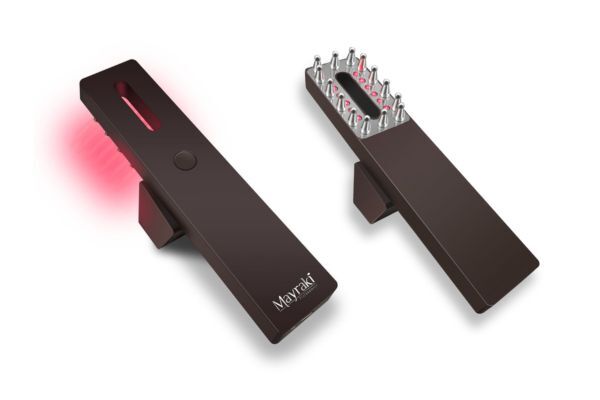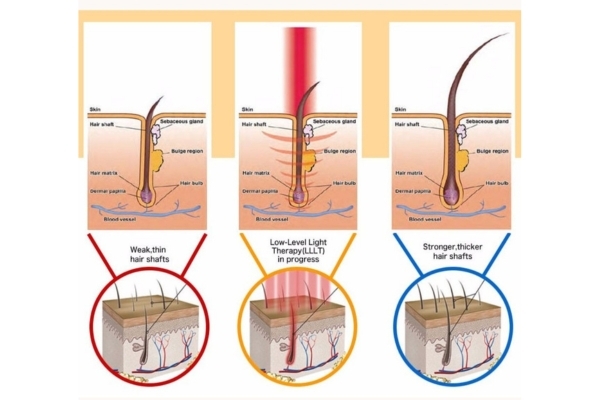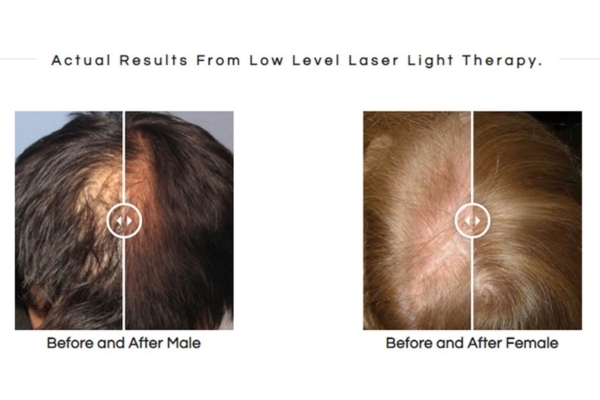New Hair Growth Technology for 2025
May 19, 2025 | By Edss Tolentino

Over the years, hair growth treatments have come a long way, evolving from simple natural remedies to advanced scientific solutions. As research continues to uncover the causes of hair loss and ways to promote healthier growth it's better to stay informed about new hair growth technology. These innovations offer promising results for those seeking effective, lasting solutions, and understanding the latest advancements can help individuals make better choices for their hair care journey.
Stem Cell Hair Therapy
Hair loss is a concern that affects millions of people worldwide. It leads to a growing demand for more effective and lasting solutions. Among the most exciting developments in recent years is stem cell hair therapy. It is a promising approach that taps into the body's natural regenerative abilities to combat thinning hair and baldness. As we explore the potential of this groundbreaking method, it's clear that hair growth technology 2025 and beyond will be shaped by a wave of hair restoration innovations designed to deliver better, more personalized results.
-
How Stem Cells Regenerate Hair Follicles
Stem cells are unique because of their remarkable ability to develop into various types of cells, including those necessary for regenerating hair follicles. In stem cell hair therapy, cells are harvested either from the patient’s own body or derived from other compatible sources. These cells are then processed and injected into areas of the scalp experiencing hair thinning or loss. Once in place, they work by activating dormant hair follicles and encouraging the growth of new, healthy hair. This natural regeneration process not only improves hair density but also enhances the overall health of the scalp which is a longer-lasting solution compared to traditional treatments.
-
Current Research and Clinical Trials
Ongoing studies and clinical trials are critical in refining regenerative hair treatments like stem cell therapy. Research teams around the world are exploring the safest and most effective ways to harvest, process, and administer stem cells for hair restoration. Some trials are combining stem cells with exosome hair treatments which are tiny vesicles that help cells communicate.
These treatments help to boost the regenerative effects even further. Scientists are also investigating hair cloning techniques, which involve creating new hair follicles from a person’s existing cells that offer hope for those with severe or advanced hair loss. Meanwhile, innovations such as low-level laser therapy for hair and laser hair growth devices are being tested alongside stem cell treatments to maximize their benefits.
-
Hair Growth Technology 2025
Looking ahead, hair growth technology 2025 is set to introduce even more advanced options for individuals facing hair loss. Treatments will likely become more tailored, with personalized hair loss solutions based on a person’s unique genetic makeup, lifestyle, and hair health needs. Additionally, combining advanced hair growth methods like stem cell therapy, exosome applications, and laser technologies will allow for multi-faceted treatment plans that are more effective and less invasive than current options.
Low-Level Laser Therapy for Hair

Hair loss can be a difficult and emotional experience, but thanks to scientific advancements, there are now more solutions than ever before. One exciting non-invasive option gaining attention is Low-Level Laser Therapy (LLLT). By using gentle laser light to stimulate hair growth it offers hope for individuals facing thinning hair and early-stage balding. Understanding how LLLT works, along with the best devices available, is key to deciding if this treatment fits into your hair restoration journey.
How LLLT Stimulates Hair Growth
LLLT uses red or near-infrared light to energize hair follicles at the cellular level. Through a process known as photobiomodulation therapy, the light penetrates the scalp and is absorbed by the mitochondria within the cells. This boosts energy production and improves blood flow, helping nourish the dermal papilla cells that are crucial for hair production. As a result, the dormant or weakened follicles are reactivated, leading to stronger, thicker hair growth over time.
Research shows that LLLT can be particularly effective for individuals suffering from androgenetic alopecia, the most common form of hair loss in both men and women. While it doesn’t produce overnight miracles, consistent use over several months can lead to visible improvement in hair density and scalp health. Importantly, LLLT also promotes scalp health optimization, creating an environment that supports healthy hair regrowth naturally.
Popular LLLT Devices on the Market
Today’s market offers a variety of Low-Level Laser Therapy devices, ranging from laser combs to full-coverage caps and helmets. Some of the most well-known brands include:
- Capillus: Offers FDA-cleared laser caps that are lightweight and designed for discreet, daily wear.
- iRestore: Features a helmet-style device combining lasers and LEDs, known for its ease of use and comfort.
- HairMax: Pioneers of the first FDA-cleared laser comb, they now offer a range of laser bands and caps for different needs.
- Theradome: A laser helmet known for its powerful medical-grade lasers and hands-free operation.
Hair Cloning and Follicle Regeneration

Hair cloning involves taking healthy hair follicle cells from a patient, multiplying them in a laboratory, and then implanting them back into the scalp where hair is thinning. Scientists focus primarily on dermal papilla cells and hair follicle stem cells which are the key drivers behind hair growth. By cultivating these cells outside the body, researchers hope to "clone" new follicles that behave just like natural ones.
This process is at the heart of regenerative hair treatments, aiming not just to relocate existing hair but to create entirely new follicles. Unlike methods such as stem cell hair therapy or low-level laser therapy for hair, hair cloning aspires to permanently solve hair loss at its root, offering a potential cure rather than a temporary fix.
Potential Benefits of Hair Cloning
- Unlimited Donor Supply: Unlike traditional hair transplants that are limited by the number of healthy follicles available, cloning could provide an endless source of new hair.
- Natural Results: Since the cloned follicles would be genetically identical to the patient's own hair, they would grow naturally, blending seamlessly with existing hair.
- Treatment for Severe Cases: Patients with advanced hair loss who aren't candidates for current treatments like laser hair growth devices or follicular unit extraction (FUE) might find hope through cloning.
- Personalized Hair Loss Solutions: Hair cloning would allow for highly customized treatments, tailored to the specific needs and conditions of each individual.
What Are Exosomes and How Do They Support Hair Regeneration?
Exosomes are tiny extracellular vesicles released by cells, carrying important proteins, growth factors, and genetic material that help regulate cellular communication. When it comes to hair growth, exosomes can deliver potent signals that stimulate dermal papilla cells, hair follicle stem cells, and surrounding tissues to encourage hair follicle regeneration.In essence, exosomes act as messengers, directing cells to repair damage, reduce inflammation, and kickstart new growth processes.
Unlike photobiomodulation therapy, which uses light to stimulate follicles or robotic hair transplantation, exosome therapy focuses on biologically rejuvenating the scalp and follicles from within, offering a promising non-surgical alternative.
Early research into exosome therapy for hair growth has been highly encouraging. Clinical studies show that injecting exosomes into the scalp can significantly increase hair density, improve hair thickness, and enhance overall scalp health optimization.
In one notable study, patients with androgenetic alopecia treated with exosomes reported visible improvements within a few months, with some achieving results comparable to or better than traditional therapies like PRP injections. Researchers believe that exosomes can enhance cellular repair even more effectively than PRP because they carry a richer array of growth factors and microRNAs.

Wrap-Up
The world of new hair growth technology is advancing at an exciting pace that offers hope to those struggling with hair loss. The most promising innovations focus on regenerating and revitalizing hair at the cellular level lik exosome treatments, hair cloning techniques, low-level laser therapy and stem cell therapies. As these technologies continue to evolve, it’s important to remember that every individual’s hair loss journey is unique. Consulting with experienced professionals can help you navigate the best options and create a personalized plan to achieve the healthiest, most effective results.




